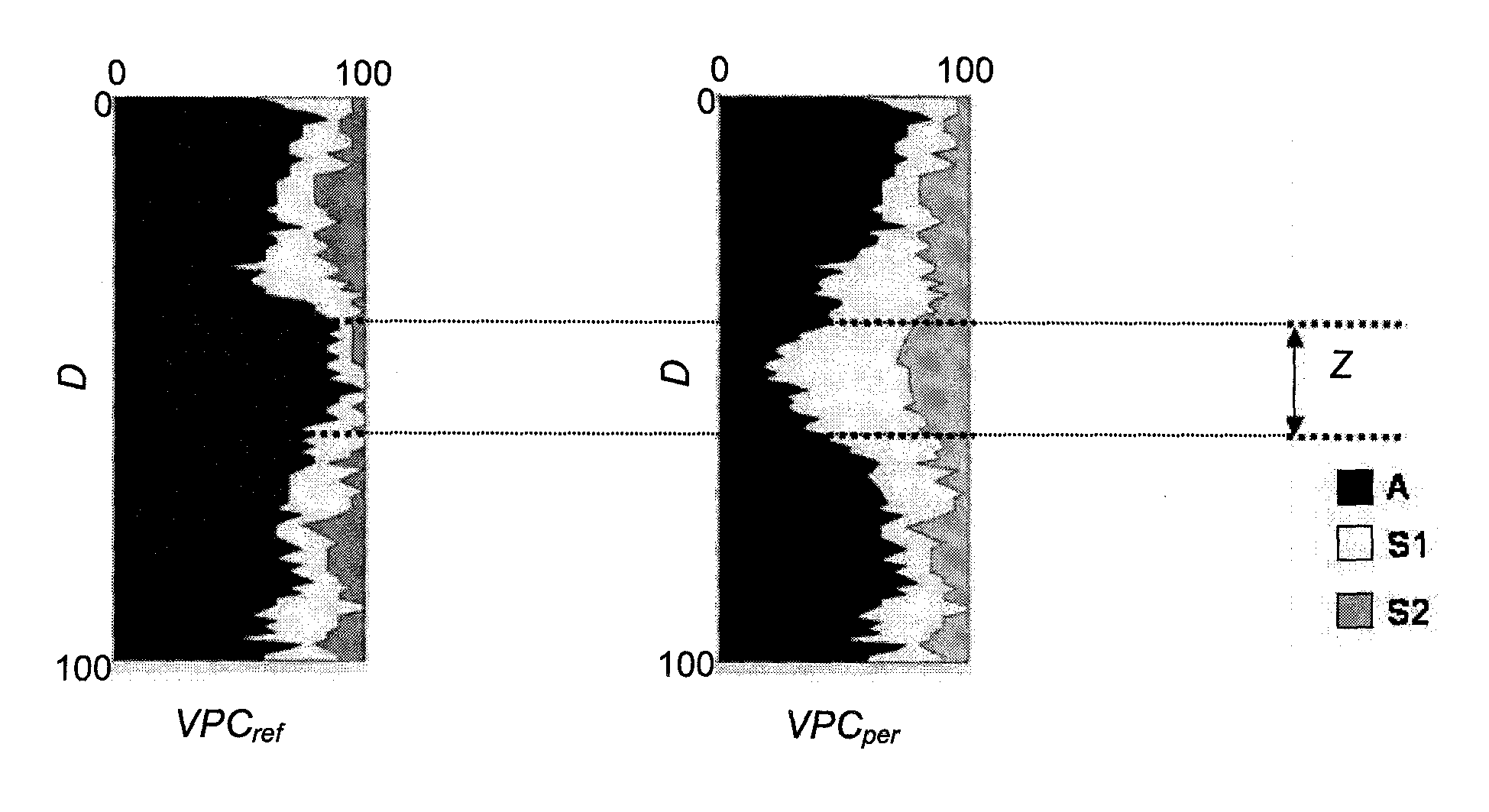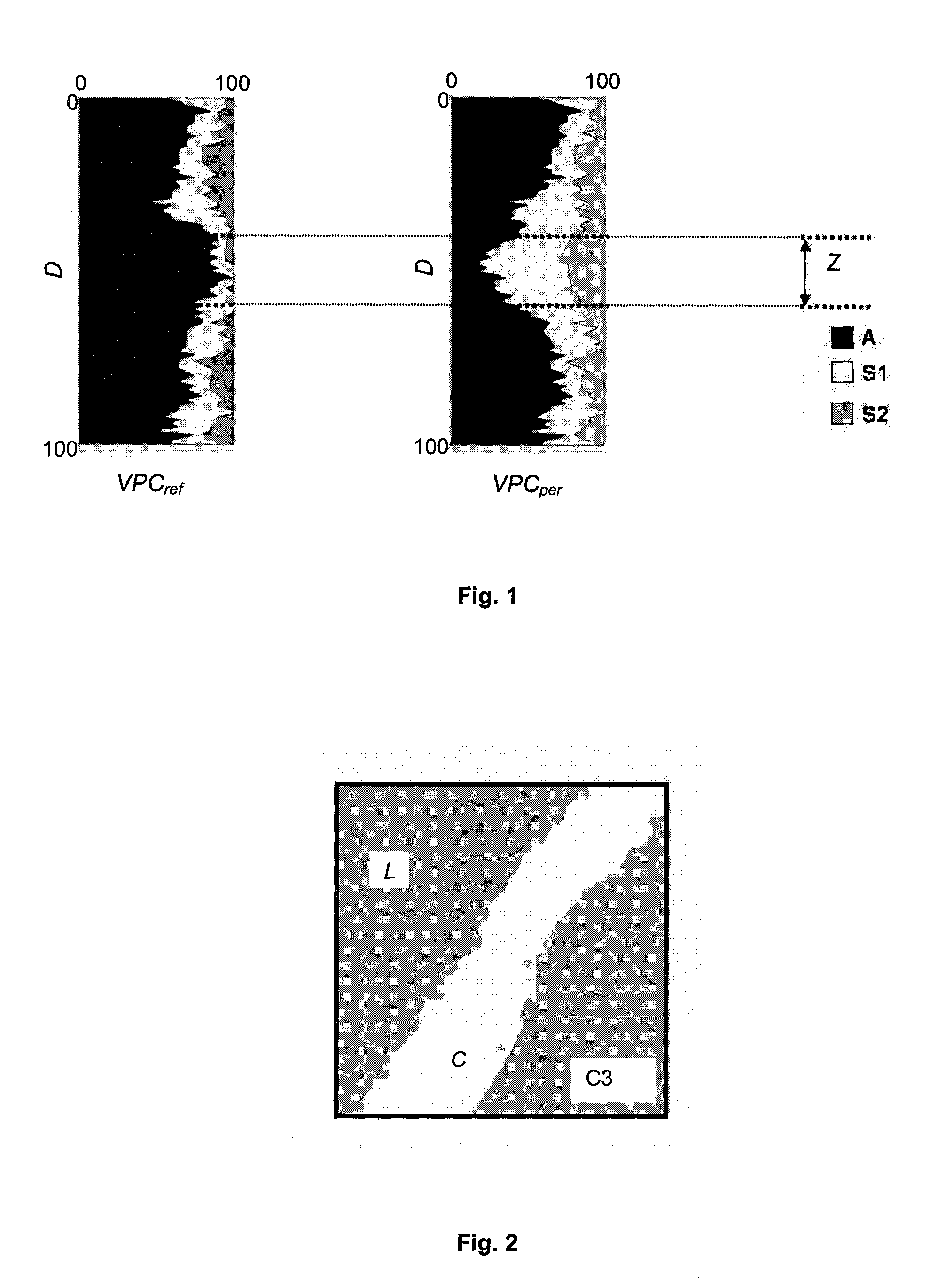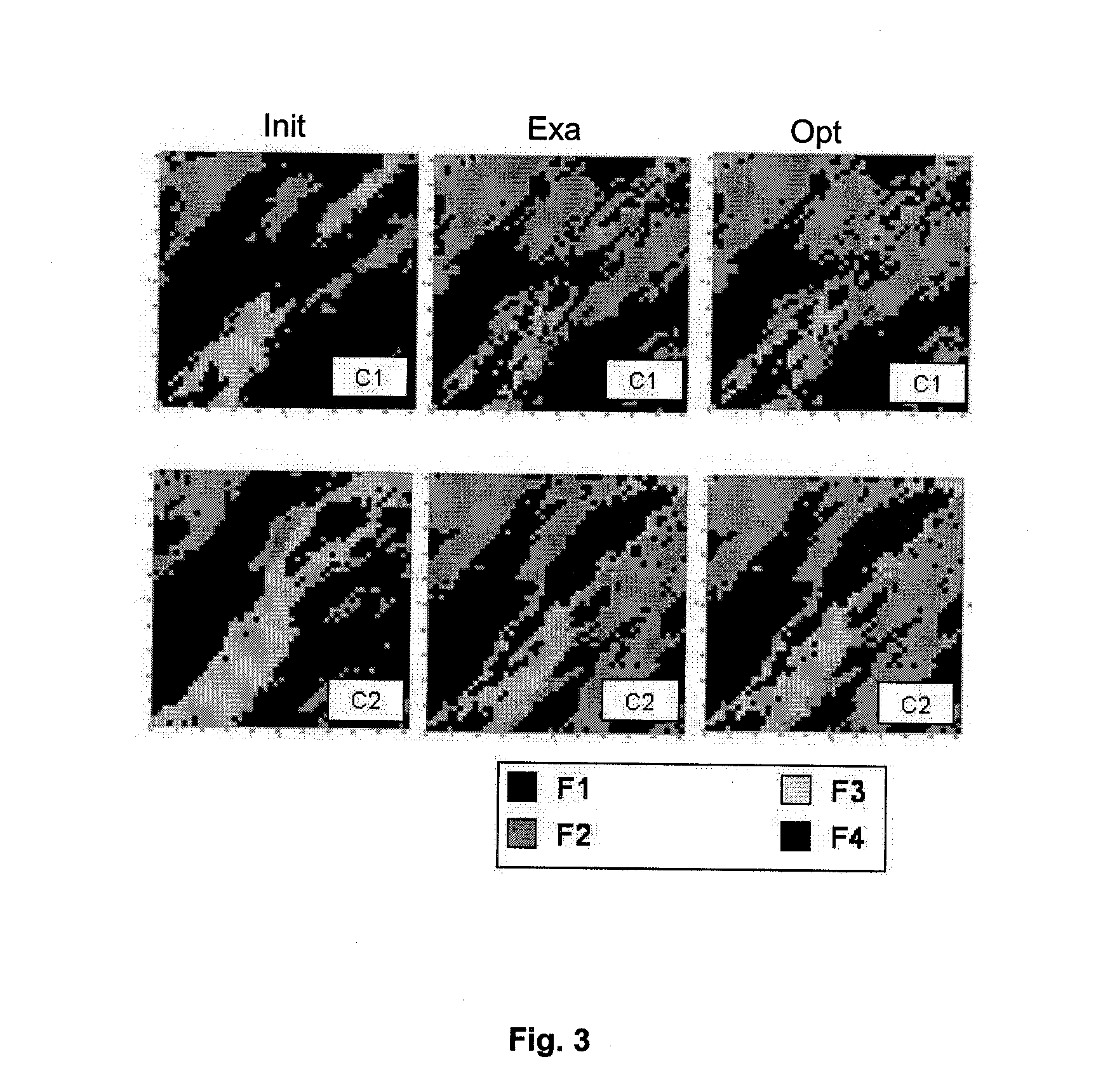Method of modified facies proportions upon history matching of a geological model
- Summary
- Abstract
- Description
- Claims
- Application Information
AI Technical Summary
Problems solved by technology
Method used
Image
Examples
embodiment 1
[0073]According to an embodiment, the zones correspond to wells. In this case, the modification of the cells of the zone corresponds to a modification of the vertical proportion curves. The vertical proportion curve can be modified globally or locally. The method allows continuous perturbation of the proportions. In this context, a local deformation is obtained either by perturbing a single vertical proportion curve, in which case the deformation is localized around the wells associated with this curve, or by perturbing the vertical proportion curves for the various wells or groups of wells in a given interval, in which case the deformation can be very extensive laterally but restricted vertically.
[0074]Regarding the vertical proportion curves, no conditioning is imposed on the wells with only an average being imposed on a block.
[0075]Initially, a proportion curve R0(u) is available representative of the variations of the proportion of a facies along a well. The goal of the cokrigin...
embodiment 2
[0083]According to another embodiment, the zone corresponds to a sub-volume of the geological model. In this case, the modification of the cells of the zone corresponds to a modification of the proportion matrix deduced from the vertical proportion curves. Calibration of the 4D seismic data in addition to the production data may require a greater flexibility in the definition of the sub-domain to be modified than provided by the facies proportion curve modification method.
[0084]For example, if the seismic data indicate the presence of a channel, the channel can be defined as a zone and an attempt is made to try to increase the proportion of sand in this zone to improve data calibration.
[0085]The method is identical to the previous case, except that it is possible to use well conditioning data. Well conditioning is introduced in the cokriging algorithm as follows: if the conditioner on a cell m is facies k, pk(m)=1 and ∀l≠k, P1(m)=0 is imposed.
[0086]The cokriging method used is a sim...
application example
[0092]The application example presented is a synthetic case representing a well test simulation in a channel. An initial model is constructed with a geostatistical simulation using the thresholded Gaussian method (Le Loc'h and Galli, 1997). The initial facies proportions give the main trends of the spatial distribution of the facies. The reservoir model is assumed to be described by four facies, which are, in increasing order of reservoir quality, “clays” (F1), “laminated clays” (F2), “laminated sands” (F3) and “sands” (F4).[0093]Le Loc'h G. and Galli, A., 1997: Truncated Plurigaussian Method: Theoretical and Practical Points of View. Geostatistics Wollongong'96, E. Y. Baafi and N. A. Schofields eds, Kluwe, p. 211-222.
[0094]A well test (draw-down) is simulated with reference facies proportions over a period of 100 h with a constant flow rate of 650 m3 / day. The well test synthetic data are the pressure difference and the derivative thereof.
[0095]The method according to the invention ...
PUM
 Login to View More
Login to View More Abstract
Description
Claims
Application Information
 Login to View More
Login to View More - R&D
- Intellectual Property
- Life Sciences
- Materials
- Tech Scout
- Unparalleled Data Quality
- Higher Quality Content
- 60% Fewer Hallucinations
Browse by: Latest US Patents, China's latest patents, Technical Efficacy Thesaurus, Application Domain, Technology Topic, Popular Technical Reports.
© 2025 PatSnap. All rights reserved.Legal|Privacy policy|Modern Slavery Act Transparency Statement|Sitemap|About US| Contact US: help@patsnap.com



